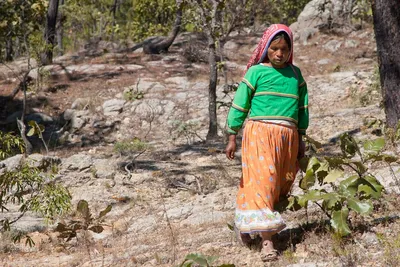
Indigenous Mexico: 20 Fascinating Cultures and Their Timeless Traditions
Indigenous Mexico: 20 Fascinating Cultures and Their Timeless Traditions
Hello friends, I am very proud to talk about Mexico’s central indigenous peoples and groups today.
As you may know, Mexico is one of the most ethnically diverse countries in the world.
Different spiritual, cultural, gastronomic, and other heritage enriches this beautiful nation.
Linguistic diversification is one of the most notorious characteristics of the Mexican Amerindians, with more than 100 languages.
An important part of this population is the indigenous Maya peoples, heirs of one of the most fascinating Native American civilizations.
How many indigenous groups are in Mexico?
There are 68 ethnic groups in Mexico, with a population of approximately 15 million indigenous people.
However, I will review the 20 most notorious indigenous groups in a fascinating journey through their habitats, customs, traditions, and legends.
1. The Nahuas
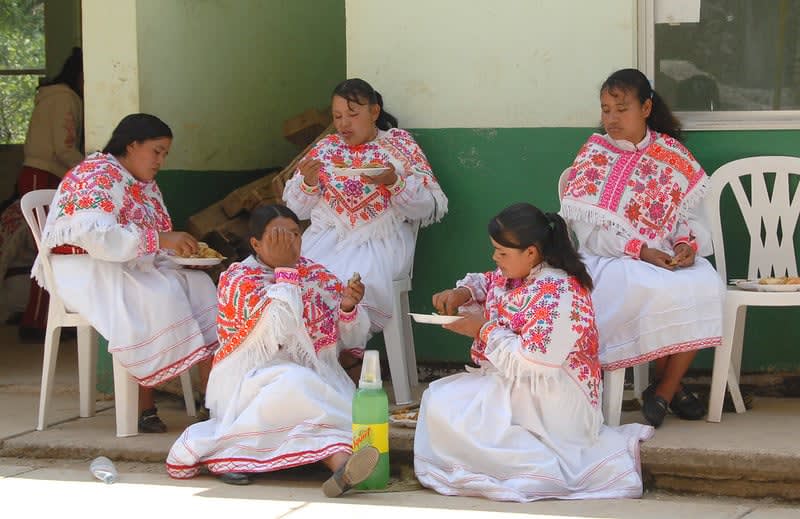
The Nahua people lead the Mexican indigenous ethnic groups in population with 2.45 million inhabitants.
They were called Aztecs by the Spaniards and have the Nahuatl language in common.
Anthropologists point out that they formed 7 peoples of the same nation: Aztecs (Mexica), Xochimilcas, Tepanecas, Chalcas, Tlahuicas, Acolhuas, and Tlaxcaltecas.
Before the arrival of the Spaniards, they constituted a powerful conglomerate throughout the Valley of Mexico, with impressive warriors and social and economic influence.
Their current communities live in the south of Mexico City.
Especially in the Milpa Alta Delegation and in enclaves in the states of Mexico, Puebla, Morelos, Tlaxcala, Hidalgo, Veracruz, Oaxaca, and Guerrero.
Nahuatl is the indigenous language with the most significant influence on Mexican Spanish.
The nouns tomato, comal, avocado, guacamole, chocolate, atole, esquite, mezcal and jicara are of Nahua origin.
Nahua Traditions and Customs
Their main ceremonies are celebrated during the winter solstice, Carnival, the Day of the Dead, and on the occasion of planting and harvesting.
Their fundamental space of economic exchange and social interaction has been the “tianguis,” a street market that they set up in Mexican towns and cities.
Their painting is one of the best known in Mexico, made on amate paper, wood, and ceramics.
2. The Mayas
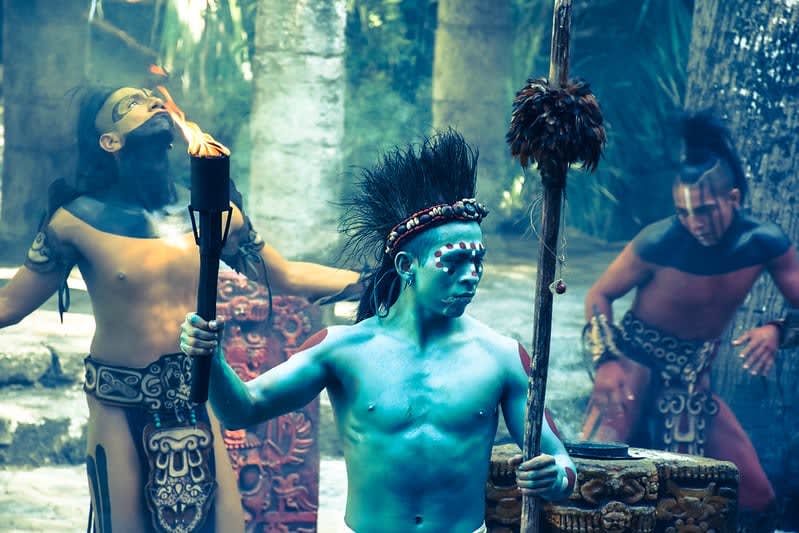
Every chronicle or monograph on the indigenous groups of Mexico gives particular importance to the Mayas because of the portentous culture they created in Mesoamerica.
This civilization developed 4 millennia ago in:
- Guatemala
- Yucatan
- Campeche
- Quintana Roo
- Tabasco
- Chiapas
- Belize
- Honduras
- El Salvador
They have one primary language with several variants, the most important being Yucatec Maya or Peninsular Maya.
Their direct descendants’ group in Mexico has a current population of 1.48 million indigenous people living throughout the Yucatan peninsula.
The first Mayas arrived in Mexico from El Petén (Guatemala), settling in Bacalar (Quintana Roo).
Some words the Maya gave to Spanish are cacao, cenote, chamaco, cachito (a small piece of something), and patatús (a seizure attack).
You may want to read: What is The Mayan Route? A Road Trip Adventure You Cannot Miss
Among the many indigenous peoples of the world, the Mayas are admired for their advanced culture in architecture, art, mathematics, and astronomy.
Maya traditions and customs
Their remarkable architecture and art were reflected in pyramids, temples, and stelae with explicit messages and allegories in sites such as Chichén Itzá, Palenque, Uxmal, Tulum, and Cobá.
The sophistication of their calendar and their precise astronomical records are astonishing.
Among their traditions, the Maya ball game and the worship of cenotes as divine bodies of water stand out.
They practiced human sacrifices because they believed they pleased and fed the gods.
One of their main Mayan ceremonies is the Xukulen, dedicated to Ajaw, the creator god of the universe.
3. Zapotecs
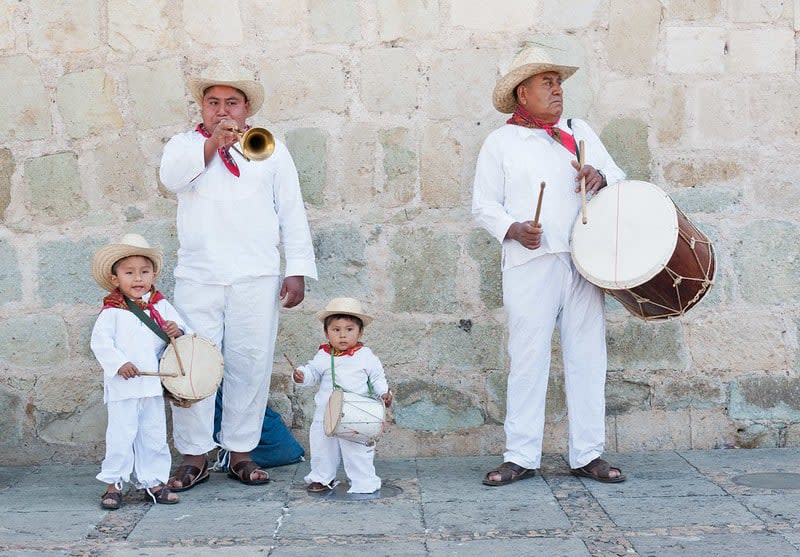
They are the third largest Mexican indigenous group, with 778,000 inhabitants concentrated in Oaxaca, with smaller communities in neighboring states.
The main Zapotec enclaves are in the Oaxaca Valley, the Zapotec highlands, and the Isthmus of Tehuantepec.
The name “Zapotec” comes from the Nahuatl word “tzapotēcatl,” which the Mexica used to define them as the “inhabitants of the place of the zapote.”
Zapote is a tropical fruit similar to mammee.
The Zapotec language has many variants and belongs to the Oto-Manguean language family.
The most famous Zapotec is the “Benemérito de las Américas,” Benito Juárez.
The original Zapotecs practiced polytheism, and the leading members of their Olympus were Coquihani, god of the sun and sky, and Cocijo, god of rain.
They also revered an anonymous figure in the form of a bat-jaguar that is believed to be the deity of life and death, in the style of the bat god Camazotz in the Mayan religion.
The Zapotecs developed a system of epigraphic writing around 400 BC, one primarily related to state power.
The main Zapotec political center was Monte Alban.
Zapotec Traditions and Customs
The Zapotec culture gave the Day of the Dead its mystical connotation of fusing the “two worlds.”
The Guelaguetza is its main celebration and one of the most colorful in Mexico regarding dance and music.
The central celebration of the Guelaguetza takes place on the Cerro del Fortin, in Oaxaca city, with the participation of delegations from all state regions.
Another Zapotec tradition is the Night of Candles to worship the patron saints of cities, towns, and neighborhoods.
4. Mixtecos
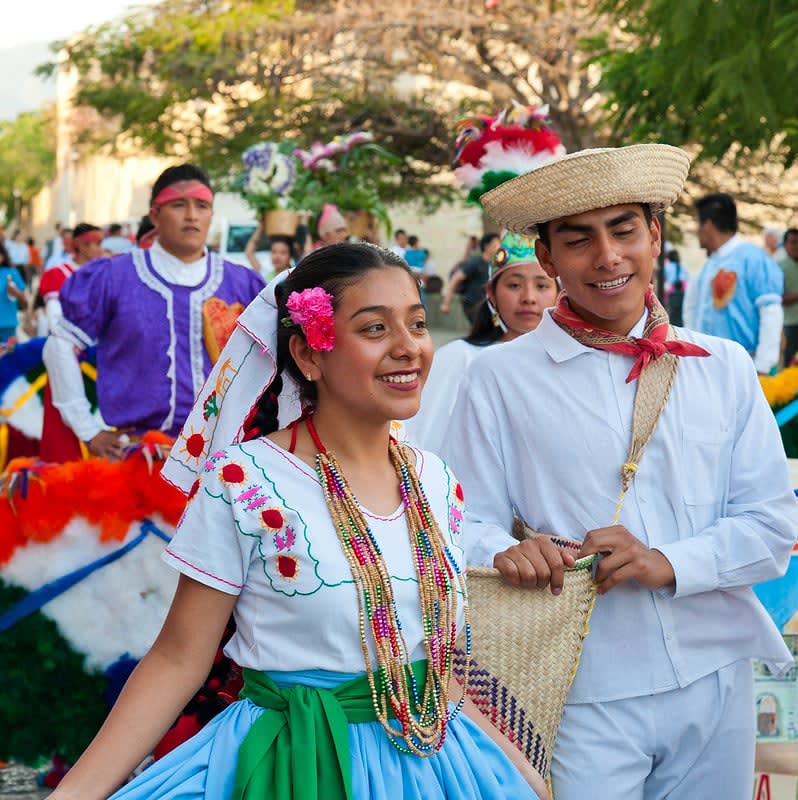
The Mixtecos represent the fourth largest native Mexican population, with 727,000 indigenous people.
Their historical geographic space has been the Mixteca, an area in southern Mexico shared by Puebla, Guerrero, and Oaxaca.
It is one of the Mexican Amerindian peoples with the oldest traces, so much so that they predate the beginning of corn cultivation.
The Spanish conquest of the Mixteca was relatively easy due to the collaboration provided by the rulers in exchange for preserving privileges.
This region enjoyed relative prosperity during the viceroyalty due to the high value of the grana cochineal used as a dye.
The so-called Mixtec languages are linguistic varieties of Otomanguean origin.
Historical processes and the solid migratory tendency of the Mixtecs brought their languages to almost all Mexican states.
Three Mixtec languages associated with the geographic area of the Mixteca can be distinguished: Coastal Mixtec, Low Mixtec, and High Mixtec.
Traditions and customs of the Mixtecos
The main economic activity of the Mixtecs is agriculture, which they practice on small plots of land that are transferred from generation to generation.
The Mixtec spiritual tradition has an animist component, postulating that all people, animals, and inanimate things have souls.
Their most important festivities are the patron saint festivals in which they reaffirm their relationships with their families and community members.
The relative poverty of their lands induced a necessary migration to other Mexican regions and the United States.
5. Otomi People
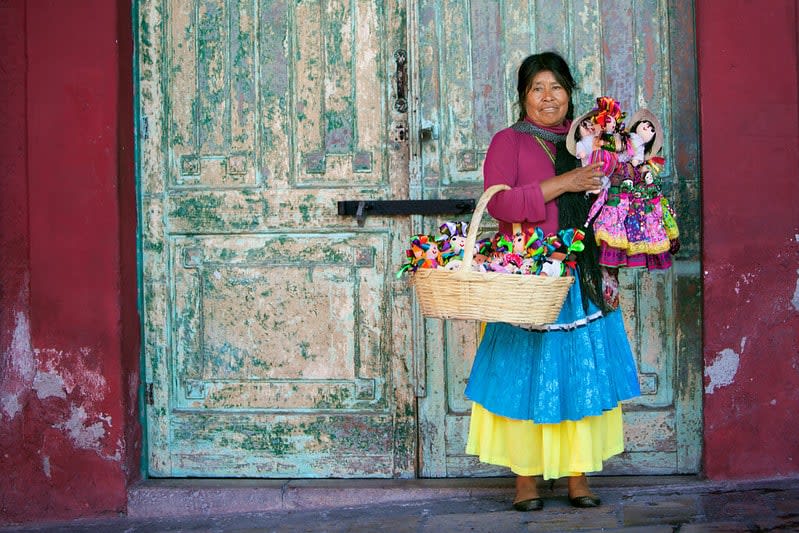
Approximately 665,000 Otomí in Mexico is fifth among the indigenous groups with the largest population.
They live in a fragmented territory in Mexico, Hidalgo, Querétaro, Michoacán, Guanajuato, and Tlaxcala.
It is estimated that 50% speak Otomi, although linguistic diversification makes communication between speakers from different states difficult.
They forged alliances with Hernán Cortés during the conquest, mainly to free themselves from the domination of other ethnic groups.
Otomi Traditions and Customs
The Otomi practice rites to improve crops and celebrate the Day of the Dead, Lord Santiago’s feasts, and other Christian calendar dates.
Their choreographic tradition is headed by the dances of Acatlaxquis, Santiagos, Moros, Matachines, and Negritos.
The dance of the Acatlaxquis is one of the most popular.
It is performed by men carrying long reeds as flutes. Its primary stage is the patron saint festivities of the towns.
Among the Otomí, the groom’s family is responsible for requesting and negotiating the bride’s hand before their family group.
6. The Totonacs – Indigenous groups in Mexico
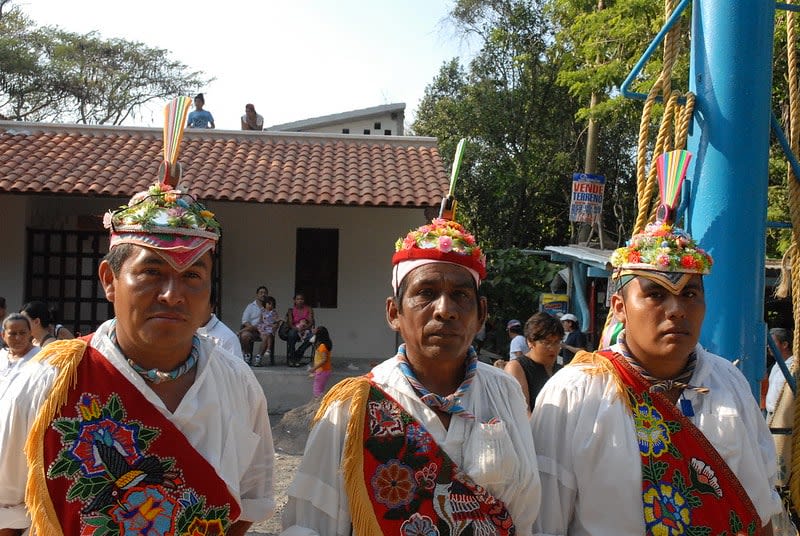
The Totonaca civilization arose in the current states of Veracruz and Puebla during the late classic period, approximately 800 A.D.
Its imperial capital and main urban center was El Tajin, whose archaeological ruins, declared a World Heritage Site, contain pyramids, temples, buildings, and ball game courts, illustrating the splendor reached by the Totonaca culture.
Other important Totonaca centers were Papantla and Cempoala.
In these two cities and El Tajin, they left evidence of their monumental clay architecture, varied pottery, and stone sculptural art.
Currently, 410,000 indigenous people of Totonaca origin live in Mexico city, Veracruz and Puebla.
The main deity of the people was the sun, to which they offered human sacrifices.
They also venerated the Corn Goddess, whom they considered the wife of the sun, and offered her animal sacrifices, believing that she detested human suffering.
Traditions and customs of the Totonacs
The Rite of Los Voladores (the flyers), one of the most famous in Mexico, was incorporated into the Totonaca culture during the post-classical era.
This ceremony survived in the Sierra Norte de Puebla thanks to these people.
The women’s traditional costume is the quechquémetl, a long, wide, and embroidered dress.
Their typical houses have only one rectangular room with a palm or thatched roof, where the entire family lives together.
7. The Tzotzil people
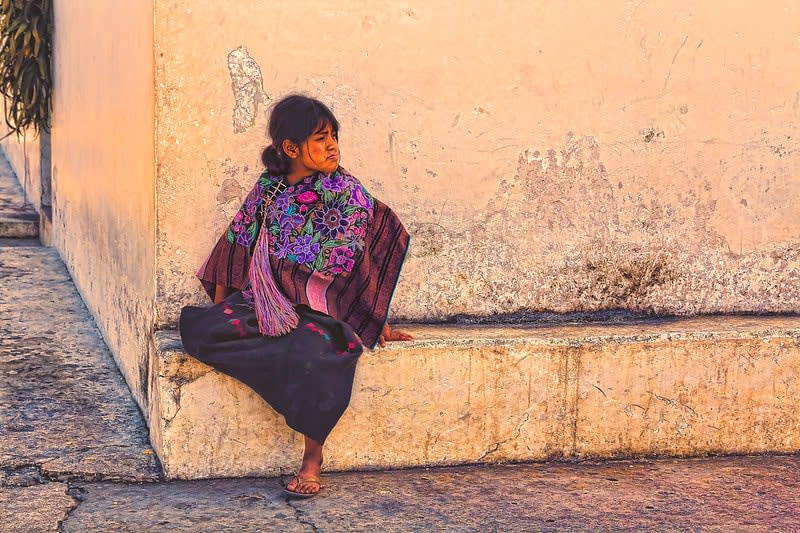
The Tzotzil are some of the indigenous groups in Mexico of Mayan origin.
They are distributed in 17 municipalities of Chiapas, San Cristóbal de las Casas their main center of life and activity.
Their region of influence can be divided between the highlands of Chiapas, with its mountainous topography and cold climate, and the lowlands, less rugged and tropical climate.
They call themselves the “bats iviniketik” or “true men” and are one of 10 Amerindian groups in Chiapas.
There are currently 407,000 Tzotzil people living in Mexico, almost all of them in Chiapas.
Their language belongs to the Mayan language family and descends from Proto-Chol.
Most of the indigenous people speak Spanish as a second language. The Tzotzil language is taught in some primary and secondary schools in Chiapas.
Tzotzil Traditions and Customs
The Tzotzil believe each person has two souls, one personal soul located in the heart and blood and the other associated with an animal spirit (coyote, jaguar, ocelot, and others).
What happens to the animal impacts the individual.
The Tzotzil do not eat sheep, which they consider a sacred animal.
Indigenous leaders are generally elders who must accredit supernatural powers.
The traditional female dress is a huipil, indigo dyed skirt, cotton sash, and shawl.
Men wear shorts, a shirt, a neckerchief, a wool poncho, and a hat.
8. Mazahuas

The history of Mexican indigenous groups indicates that the Mazahuas originated from the Nahua migrations towards the end of the Postclassic period and the cultural and racial fusion of Toltec-Chichimeca communities.
The Mazahua community comprises some 325,000 indigenous people who live in the states of Mexico and Michoacán, where they are the most numerous Amerindians.
Their main historical settlement has been the San Felipe del Progreso municipality in the state of Michoacán.
Although the term “Mazahua” is unknown, some specialists affirm that it comes from the Nahuatl language and means: “where there are deer.”
The Mazahua language belongs to the Otomanguean family and has two variants, the western or Jnatjo and the eastern or Jnatrjo.
There is also a Mazahua minority in Coahuila. In Torreon, a community of about 900 indigenous people formed by Mazahua migrated north during the 20th century.
Mazahua Traditions and Customs
Mazahua people have preserved their cultural manifestations, such as worldviews, ritual practices, language, oral tradition, dance, music, clothing, and handicrafts.
Traditionally, the native language has been the primary means of communication, although fewer children speak it.
The rites and festivities have an organization in which the central figures are judges and butlers.
They usually build houses and carry out major works on days called “faenas,” in which the whole community participates.
9. Mazatecos
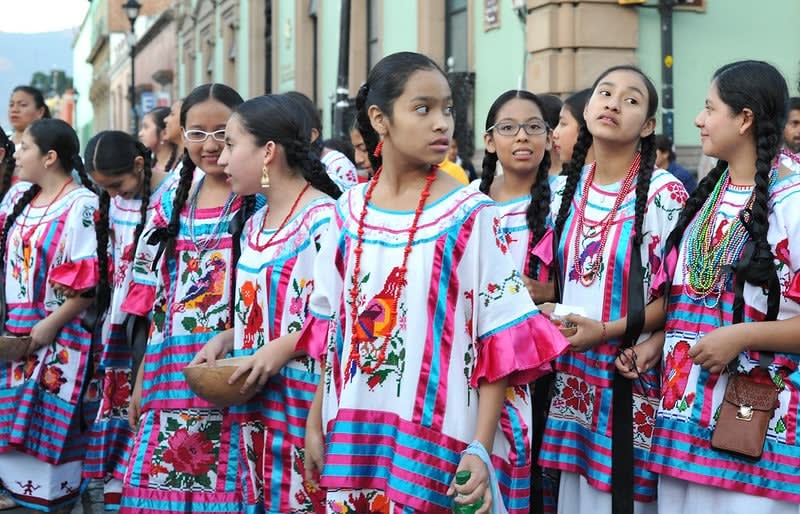
The Mazatecos integrate a Mexican ethnic group that lives north of Oaxaca and south of Puebla and Veracruz, comprised of some 305,000 indigenous people.
They became world famous thanks to María Sabina (1894-1985), a Mazateca Indian who gained international fame for hallucinogenic mushrooms’ open, ceremonial, and curative use.
Her traditional homeland has been the Sierra Mazateca, in Oaxaca, divided into Mazateca Alta and Mazateca Baja, the former cold and temperate and the latter warmer.
During the period 1953-1957, the construction of the Miguel Alemán dam drastically modified the habitat of the Mazatecos, causing the migration of tens of thousands of indigenous people.
The Mazatec languages, although closely related, do not constitute a linguistic unit.
The most widely spoken variant is the Mazatec of Huautla de Jimenez, Oaxaca’s Magical Town and hometown of María Sabina.
Huautla de Jimenez is one of the leading Mexican destinations for psychedelic tourism, formed by travelers interested in new hallucinogenic experiences.
Mazatec Traditions and Customs
The main cultural traits of the Mazatecos are their traditional medicine and ceremonial practices linked to the consumption of psychoactive mushrooms.
Their most relevant economic activities are fishing and agriculture, especially sugar cane and coffee.
Rites and celebrations are related to the Christian and agricultural calendars, in which the dates of sowing, harvesting, and requests for rainfall stand out.
A therapeutic ritual includes consuming hallucinogenic mushrooms to enter a trance and resolve personal and group conflicts.
10. The Huastecos
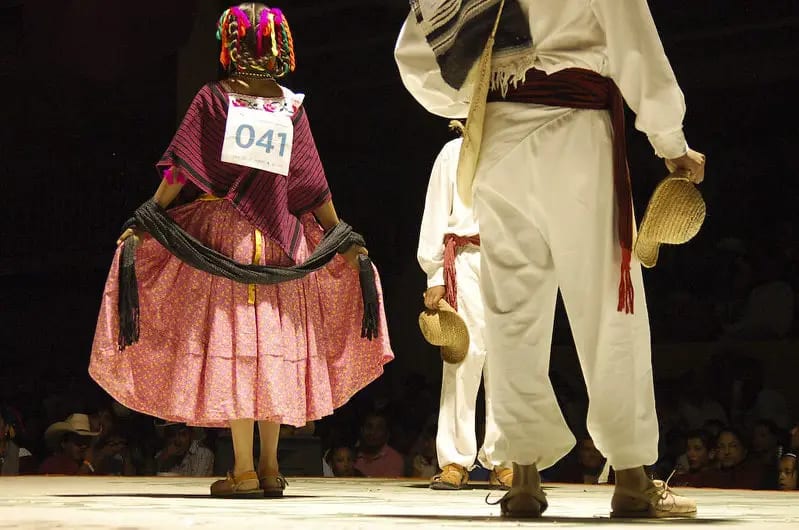
The Huastecos descend from the Mayans and inhabit La Huasteca Potosina.
La Huasteca is a vast region that includes northern Veracruz, southern Tamaulipas and parts of San Luis Potosí and Hidalgo, and to a lesser extent, Puebla, Guanajuato and Querétaro.
The Huastec dialect, or Tenek, is a Mayan language and the only non-extinct language of the Huastecan branch after the disappearance of the Chicomuseltecan language in Chiapas was confirmed in the 1980s.
It is also the only Mayan language spoken outside the traditional historical space of the Mayas, formed by the Yucatan peninsula, Guatemala, Belize, and El Salvador.
The vast territory of La Huasteca shows a great ecological variety with coasts, rivers, mountains, and plains.
However, the Huastecans have always preferred the warm climate as they usually live below 1000 meters above sea level. The basis of their economy and diet is corn.
There are currently 227,000 Huastec Indians in Mexico.
Traditions and customs of the Huastecans
This town is known for the huapango or son huasteco, a musical genre among the most appreciated in Mexico. It includes singing and foot-tapping.
Huastecan choreographies include the “disguised dance” performed during the Candelaria festivities.
The typical costume of the huastecas is a panuco over a plain blouse and a wide and long skirt.
White color predominate in all the pieces, a characteristic feature in the dress of the region of the Gulf of Mexico.
11. Choles
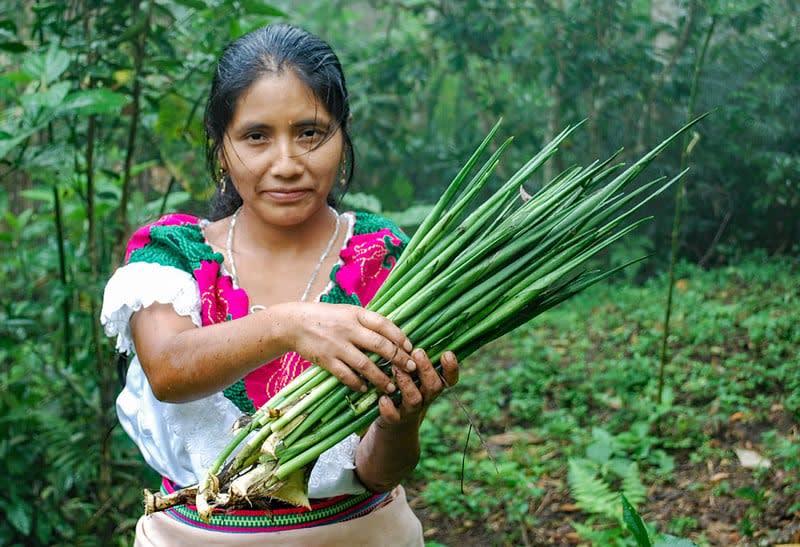
The Choles are indigenous people of Mayan origin who live in Chiapas, Tabasco, Campeche, and Guatemala.
They call “kaxlan” a foreigner or outsider, be it a landowner, farmer, evangelist, or government member, meaning “does not belong to the community.”
Corn revolves around their lives, a sacred food given by the gods. They consider themselves “the men created from corn.”
They speak the Chol language, a Mayan language with two dialects, Tila Chol and Tumbalá Chol, associated with municipalities in Chiapas.
Its numerical system is vigesimal, as was usual in Mesoamerican indigenous peoples, whose reference for numbering was the 20 fingers of the body.
They live from livestock, pig farming, and agriculture, growing corn, beans, sugar cane, coffee, and sesame.
Its natural environment comprises mighty rivers forming beautiful waterfalls such as Agua Azul and Misol-Ha. There are 220,000 Choles in Mexico.
Chol traditions and customs
The Choles attach great importance to marriage and tend to wed among relatives, which is why they are a people with a high level of endogamy.
Men are dedicated to agricultural and livestock activities, while women help by harvesting fruits, vegetables, and herbs in small family gardens.
Their main festivities are related to the agricultural calendar in a mix with Christian beliefs. Corn has a dominant position.
In the preparation of the land, the death of the corn god is celebrated, while the harvest is the resurrection of the food deity.
12. Purépechas: One of the most popular Indigenous groups in Mexico
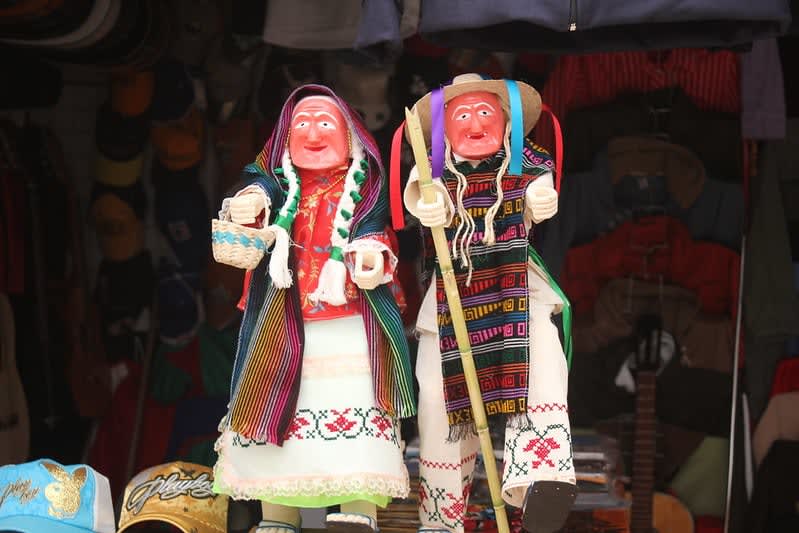
This indigenous group is formed by 203,000 indigenous people living in the Tarasca or Purépecha plateau in Michoacán, Mexico.
In Nahuatl, they were known as Michoacanos or Michoacas, and their habitat extended to Guanajuato and Guerrero.
Their current communities cover 22 Michoacan municipalities, and migratory flows have created settlements in Guerrero, Guanajuato, Jalisco, Mexico State, Colima, Mexico City, and even the United States.
They practiced a polytheistic religion during the pre-Hispanic era in which a male creator principle, a female creator principle, and a messenger or “divine breath” coexisted.
A trilogy associated with the father, mother, and child.
The symbol of the masculine creator principle was the sun; the moon represented the feminine creator principle, and Venus was the messenger.
Purepecha Traditions and Customs
The Purepecha flag is formed by four quadrants of purple, light blue, yellow, and green, with an obsidian figure in the center representing the sun god.
The purple symbolizes the Cienaga de Zacapu region, the blue lake region, the yellow Cañada region, and the green mountain forests.
One of their main festivities is the Night of the Dead, in which they celebrate the life of their ancestors and remember the good times lived by their side.
13. Chinantecas
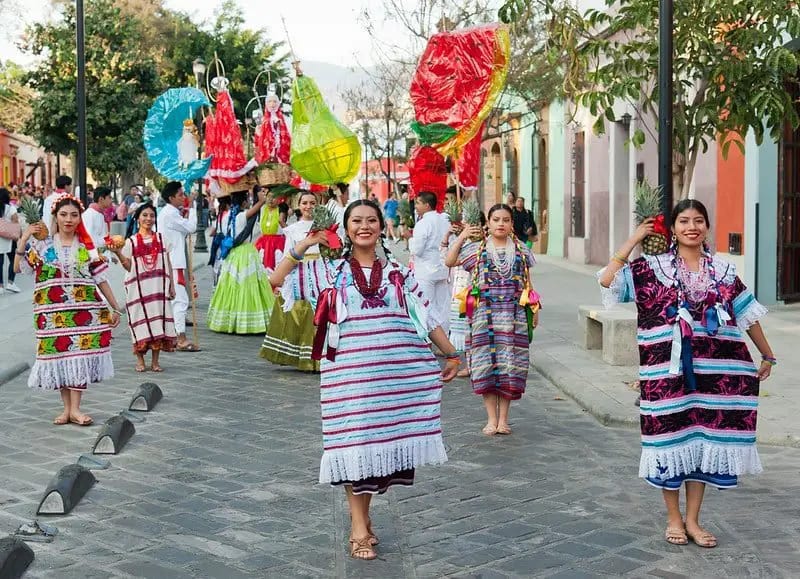
The Chinantecas or Chinantecos live in an area of Chiapas known as Chinantla, a socio-cultural and geographic region in the north of the state that includes 14 municipalities.
It has a population of 201,000 indigenous Mexicans.
The language is of Otomanguean origin and comprises 14 variants, although the number is not precise since it depends on the linguistic criteria used.
Chinantec language has a VOS structure (verb – object – subject), and the tones vary from one dialect to another.
The origin of the Chinantec people is unknown, and it is believed that they migrated to their current location from the Tehuacán Valley.
Diseases brought by the Spaniards exterminated eighty percent of the population, and the conquest forced the rest to migrate to the highlands.
During the colony, the Chinantla region had particular economic importance due to cochineal and cotton.
Chinantecan Traditions and Customs
The stone soup or caldo de piedra, an exotic Mexican preparation in which food is cooked by contact with incandescent stones, is of Chinantec origin.
According to the tradition of these indigenous people, the soup is prepared by men and only with stones chosen by the elders.
It is made in jícaras and not in metal or ceramic pots.
Chinantec women wear colorful embroidered dresses with round and ornate necklines. The main festivities are the patron saint, Carnival, and New Year’s Day.
14. Mixes
Another important community that is part of the indigenous groups in Mexico is the Mixes.
About 169,000 indigenous people live in the Sierra Mixe, the Oaxacan mountain range of the Sierra Madre del Sur.
They speak Mixe, a language belonging to the Mixe-Zoquean family.
There are five variants or dialects associated with geography:
- Northern High Mixe
- Southern High Mixe
- Middle Eastern Mixe
- Midwestern Mixe
- Low Mixe
Some linguists add a further Mixe spoken in communities in the municipality of Totontepec.
Most Mixe communities are agrarian organizations operating independently of each other in communal property territories.
In San Juan Guichicovi, lands are exceptionally owned and operated by the community (nobody outside the community can purchase land).
In the municipalities of San Juan Cotzocón and San Juan Mazatlán, both forms of tenure (communal property and ejidos) coexist.
Mixe traditions and customs
The Mixes still use the house-to-house commercialization system.
Selling or trading food products or clothing for other goods,s such as coffee, an exchange system that works in conjunction with the village markets.
Men mainly manage livestock, hunting, fishing, and farming. At the same time, women help with weeding, harvesting, and storage.
They also take care of child-rearing and food.
The Mixes believe that the spirits of the dead continue to live in the same vicinity and perform rites during funerals not to harm the living.
15. Tarahumara or Rarámuri
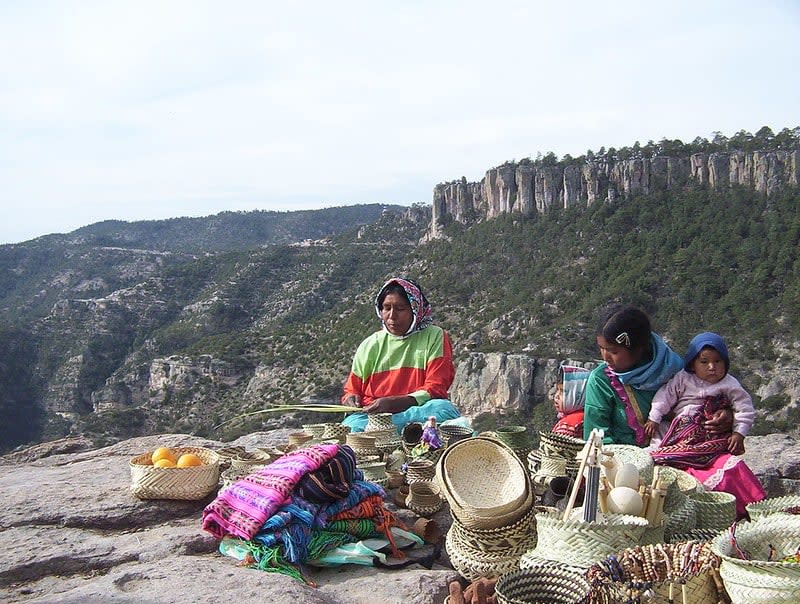
The Tarahumara are a native Mexican ethnic group of 122,000 indigenous people living in the Sierra Madre Occidental in Chihuahua and parts of Sonora and Durango.
They prefer to call themselves Rarámuris, “those with light feet,” which honors their tenacious ability to run long distances.
Their high-altitude habitat in the Sierra Tarahumara Chihuahua encloses some of Mexico’s most impressive chasms, such as the Copper Canyon, Urique, and Batopilas.
It is believed that they arrived through the Bering Strait, and the oldest human presence in the Sierra dates to 15,000 years ago.
Their language belongs to the Yuto-Nahua family with five dialects according to the geographic location:
- Central
- lowland
- northern
- southeastern
- southwestern Tarahumara
They live in log huts and caves and sleep on pallets or an animal hide lying on the ground.
Traditions and customs of the Tarahumara
Rarajipari is a game where the Tarahumara kick and chase a wooden ball for distances exceeding 60 km.
The female equivalent of rarajipari is Rowena, in which women play with intertwined hoops.
The tutugúri is a Rarámuri dance as a way of thanksgiving to ward off evil spells and avoid illnesses and misfortunes.
The ceremonial and social drink of the Tarahumara is tesgüino, a stronger version of tejuino.
16. Mayos
The Mexican Mayo people are in the valley of the Mayo (Sonora) and the valley of the El Fuerte (Sinaloa), in a coastal zone between the rivers Mayo and Fuerte.
The name Mayo means “the people of the riverbank,” and the population is 93,000 indigenous people.
As with other ethnic groups, the name imposed on the town is not what the indigenous people prefer.
The Mayos call themselves Yoremes, “the people who respect tradition.”
Their language is Yorem Nokki, of Uto-Aztec origin, very similar to Yaqui, nationally recognized as an indigenous language.
Important festivities include Lent and Holy Week, which they stage with all the events surrounding the Passion of Christ.
The Yoreme people have a flag designed by a young indigenous man whose name is unknown.
It consists of a black deer in a jumping position surrounded by stars on an orange background.
Mayos traditions and customs
The dances of the Mayos represent the animals and their sacrifices to give life to men.
They are allegories of the free human being in nature.
Traditional medicine is based on the prescription of natural remedies by healers and the use of amulets, in a mixture of magic and Christian faith.
17. Chontales of Tabasco
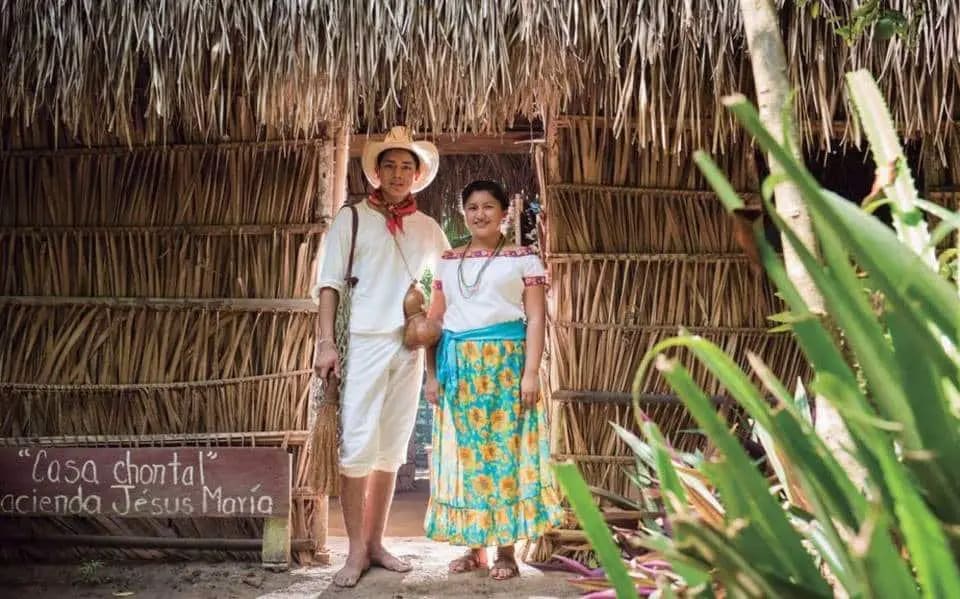
Chontales are native people of Tabasco formed by 80,000 indigenous people of Mayan origin who live in the municipalities of Nacajuca, Centla, Jalpa de Méndez, Macuspana, and Centro.
The Mexicas called “chontal” (foreigners) to all the other peoples, the reason why the name of the ethnic group comes from Nahuatl.
Chontal people of Tabasco call themselves “real men” and “real women.”
Traditions and customs
With the Christian evangelization during the conquest and the colonial era, many pre-Hispanic American peoples merged their deities with the main figures of Christianity.
For the Chontales, Ix Bolom is a pre-Hispanic goddess who lives in the center of the ocean as the owner of the spirits and animals.
With religious syncretism, Ix Bolom was associated with Our Lady of Guadalupe.
The Chontal people are very fond of pozol, an original and refreshing pre-Hispanic drink made of cocoa and corn.
The drum and the Chontal hat are two of the most appreciated handicrafts of this Mexican indigenous people.
18. Huicholes – Indigenous groups in Mexico from Nayarit
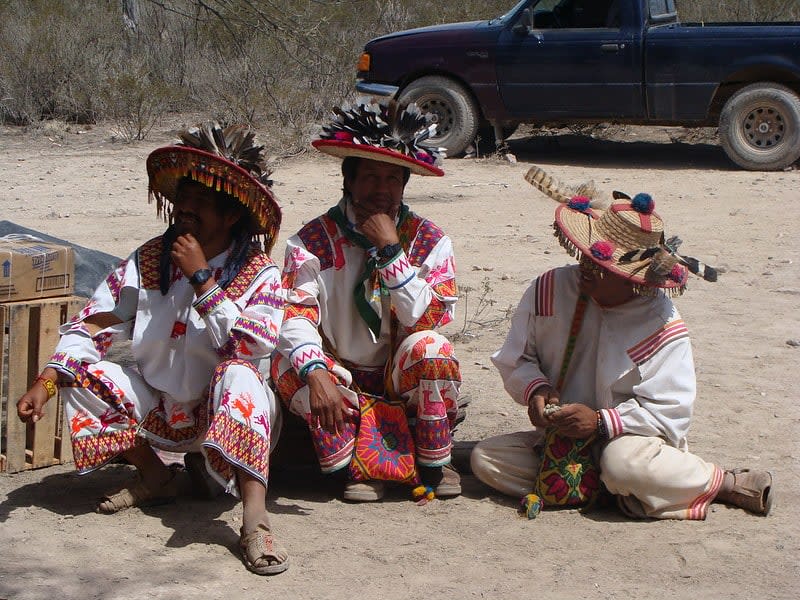
Huicholes or Wixárikas is a native indigenous group inhabiting the Sierra Madre Occidental in Nayarit, Mexico, and the highland areas of Jalisco, Zacatecas, San Luis Potosí, and Durango.
The name “Huichol” is the Spanishization of a Nahuatl voice, while the term “Wixárika” is from the native language meaning “the people.”
Wixaritari is the language of the Huichol and belongs to the Uto-Aztecan group of languages related to the Nahua or Aztec group.
The traditional religiosity of the Huicholes includes the use of peyote, a hallucinogenic cactus that grows in that part of the highlands.
Their religion is a mixture of animist and nativist beliefs, with strong pre-Columbian roots and a relatively minor influence of Catholicism.
Huicholes have four major deities: corn, deer, eagle, and peyote, which they consider descendants of the sun.
Huichol traditions and customs
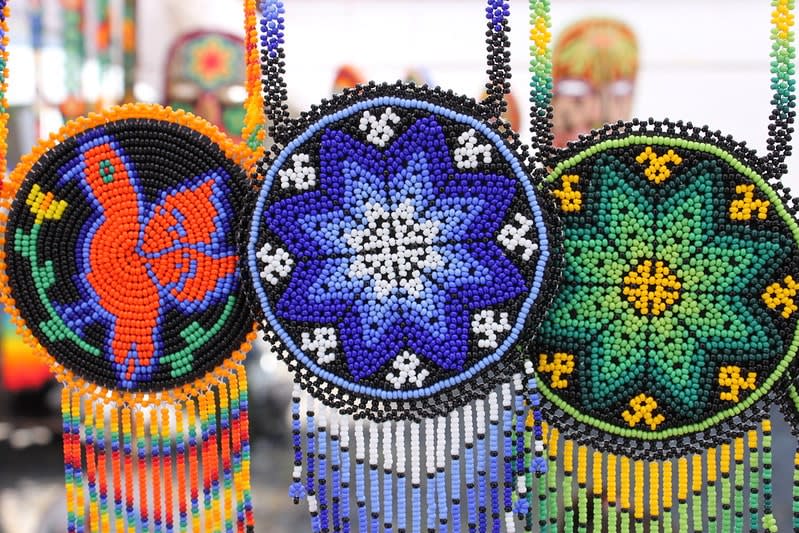
Huichol art is one of the most famous in Mexico, especially for its beautiful worsted paintings and beadwork.
Their designs are world-famous and have both cultural and religious meanings.
Huichol women wear a simple traditional costume with a short poppy-colored blouse, petticoat (flowered cloak covering the head), and chaquira necklaces.
Men wear white pants and shirts with cotton embroidery, a cape, and a palm hat with balls of yarn or chaquira ornaments.
19. Coras
The Coras are 25,000 Mexican indigenous people concentrated in the municipality of El Nayar, to the east of Nayarit, although there are also communities in Jalisco.
They call themselves “nayeeri,” the voice from which the state’s name comes.
Coras speak the Nayeri language, which is related to Huichol and distantly to Nahuatl.
They commonly communicate in their language, although they also use a dialect of Nayeri, modern, and old Spanish.
Their religion mixes Christianity with pre-Hispanic beliefs. Tayau represents the sun, who sits on a golden chair smoking his pipe at noon, whose smoke is the clouds.
Agriculture and animal husbandry is their primary source of income.
Corn, beans, melon, squash, watermelon, peanuts, sugar cane, cucumber, tomatoes, chili peppers, and Mexican turnips (jicama) are the most common crops.
They raise cows, sheep, goats, pigs, horses, mules, and poultry.
Traditions and customs
Coras maintain a close relationship with nature and consider their territory of about 120,000 hectares sacred.
Several of their festivities aim to rebirth and renewal the life cycle of the gods, spirits, animals, and plants.
They produce handicrafts such as wool, synthetic fiber, cotton backpacks, jute hats, and leather “huaraches” (sandals) with tire soles.
Clothing is straightforward. Women wear skirts and blouses, while men wear blanket underpants, shirts, hats, and huaraches.
20. Yaquis – Indigenous groups from Sonora, Mexico
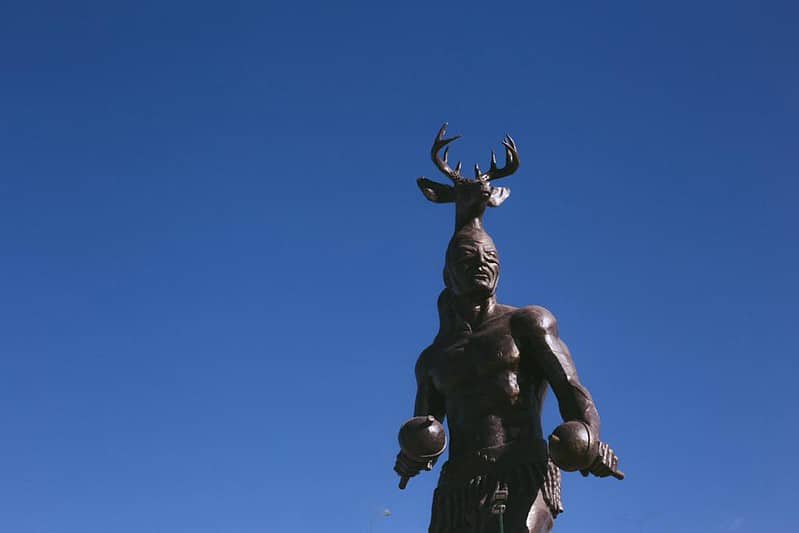
These are indigenous people from Sonora who settled along the banks of the Yaqui River.
They currently number 23,000, live in their traditional zone, and form colonies in Sonora’s cities.
La Matanza, Sarmiento, and El Coloso are settlements in Hermosillo, known as the “Yaqui neighborhoods.”
They speak the Yaqui language, or Yoem Noki, of the Uto-Aztecan family, so similar to the Mayan language that they have 90% mutual intelligibility.
Their elementary and junior high schools are bilingual (Yaqui/Spanish).
Yaquis raise cattle and fish (especially in Puerto Lobos) and cultivate the land, mainly wheat, soybeans, alfalfa, safflower, vegetables, and fodder.
The Jesuits evangelized them and are essentially Catholic, performing their rites in Latin.
Lent is their primary religious festivity. They stage the Passion of Christ with flute and drum music, including performers who embody Christ, Pontius Pilate, the Pharisees, and the Romans.
Yaqui traditions and customs
The dances are part of the oldest traditions of the Yaqui people.
In the pascola dance, three men dance bare-chested while dry caterpillar shells are attached to their legs.
The dance is accompanied by harp, violin, and percussion instruments.
The deer dance is a representation of the hunting of the animal accompanied by harp and violin music.
The pajkolas dance usually precedes the deer dance, and its music is performed with drums and a typical Yaqui flute.
Top 20 Indigenous Groups in Mexico: Conclusion
In conclusion, Mexico is home to diverse indigenous groups, each with unique cultures, languages, and traditions.
From the Nahua people in Central Mexico to the Maya in the Yucatan Peninsula, these groups have faced historical and ongoing challenges in maintaining their identities and ways of life.
Despite these obstacles, many indigenous communities in Mexico strive to preserve their heritage, revitalize their languages, and promote their art and crafts.
As travelers, we can support these efforts by visiting indigenous communities, learning about their cultures, and purchasing handmade products.
By doing so, we can help promote respect and appreciation for Mexico’s rich indigenous heritage and contribute to preserving these important traditions for future generations.